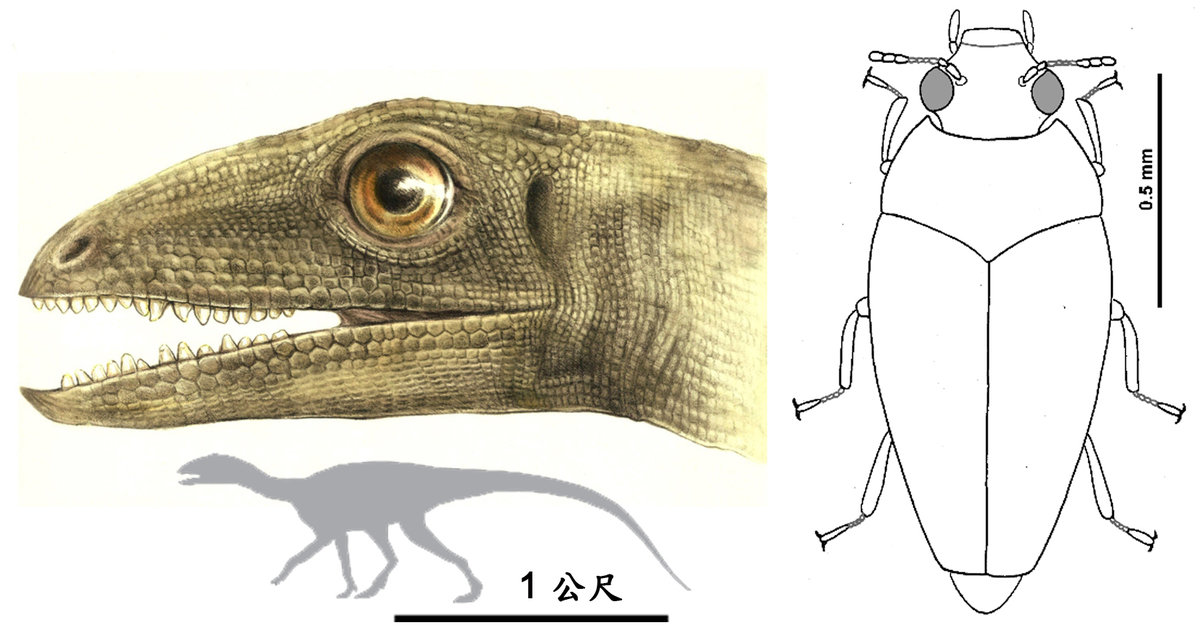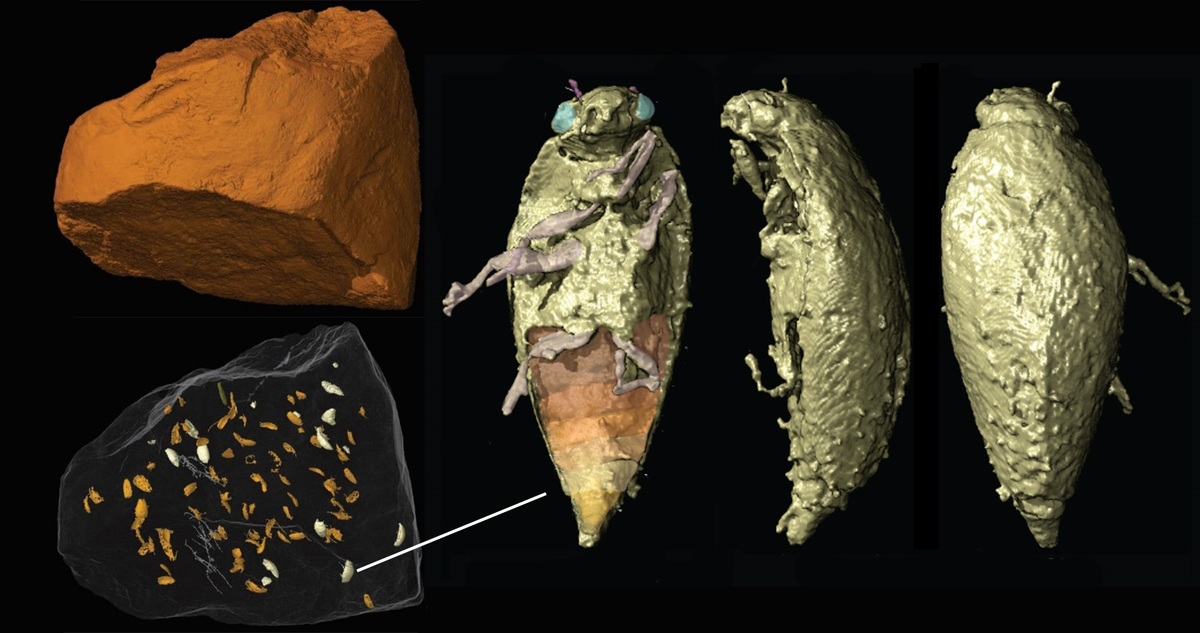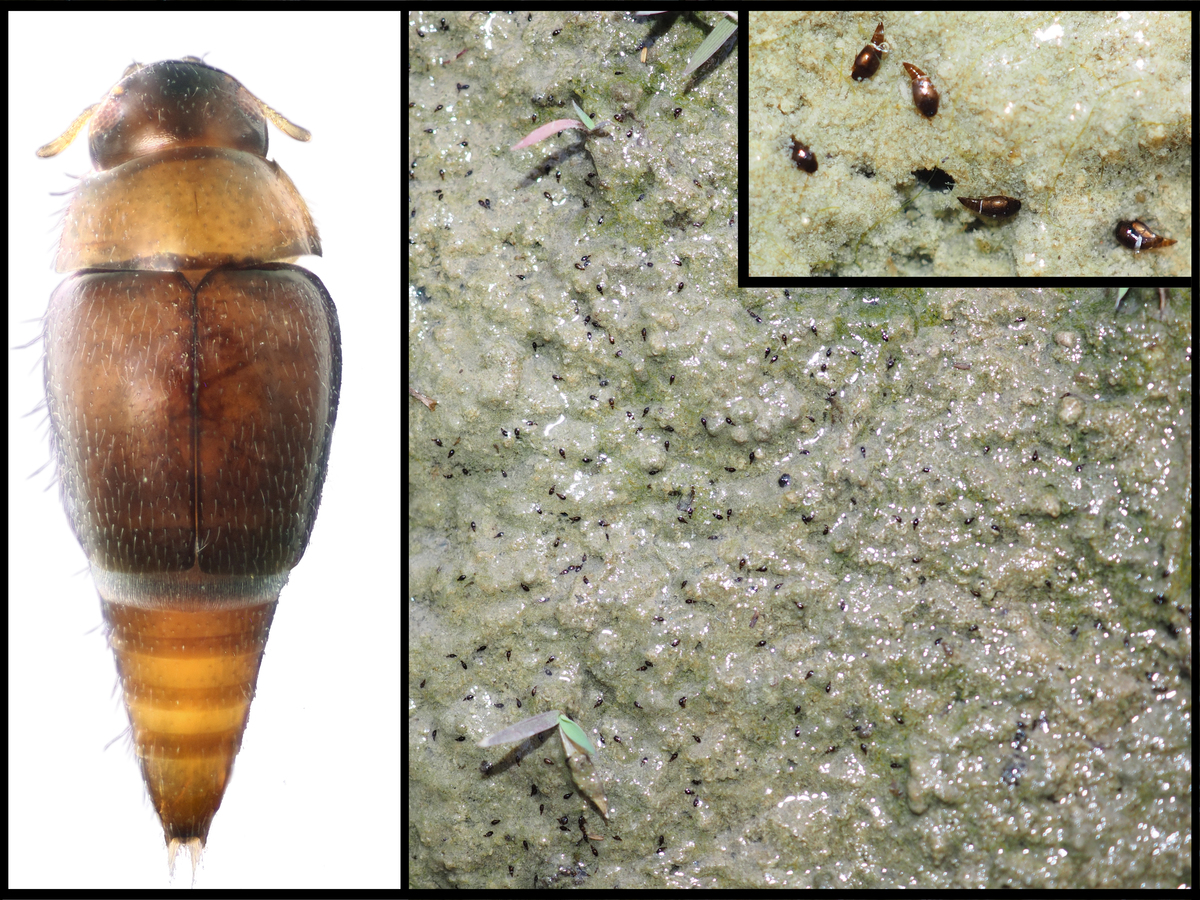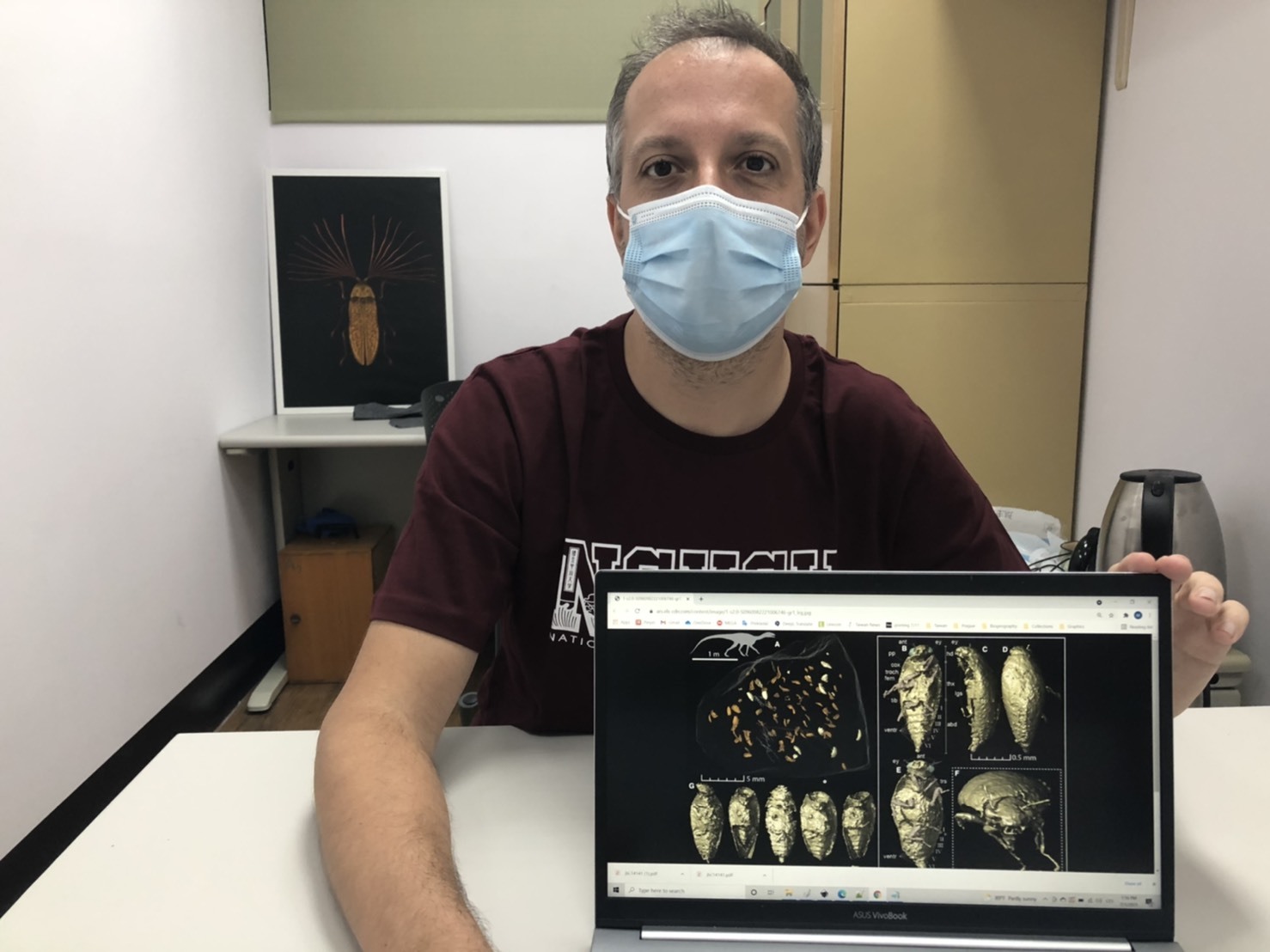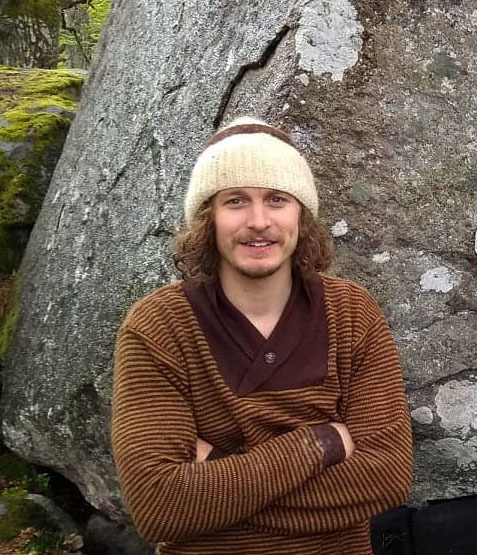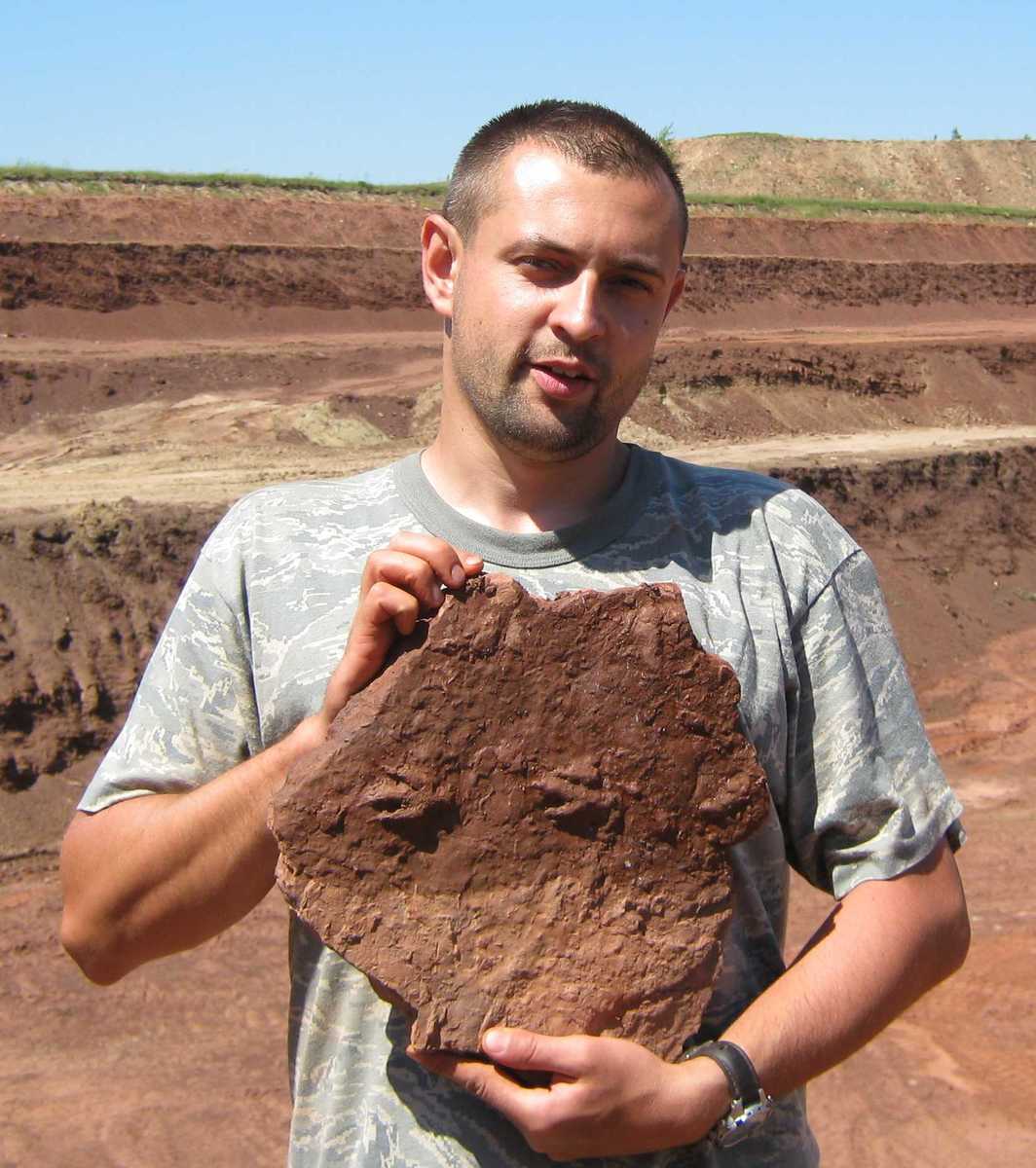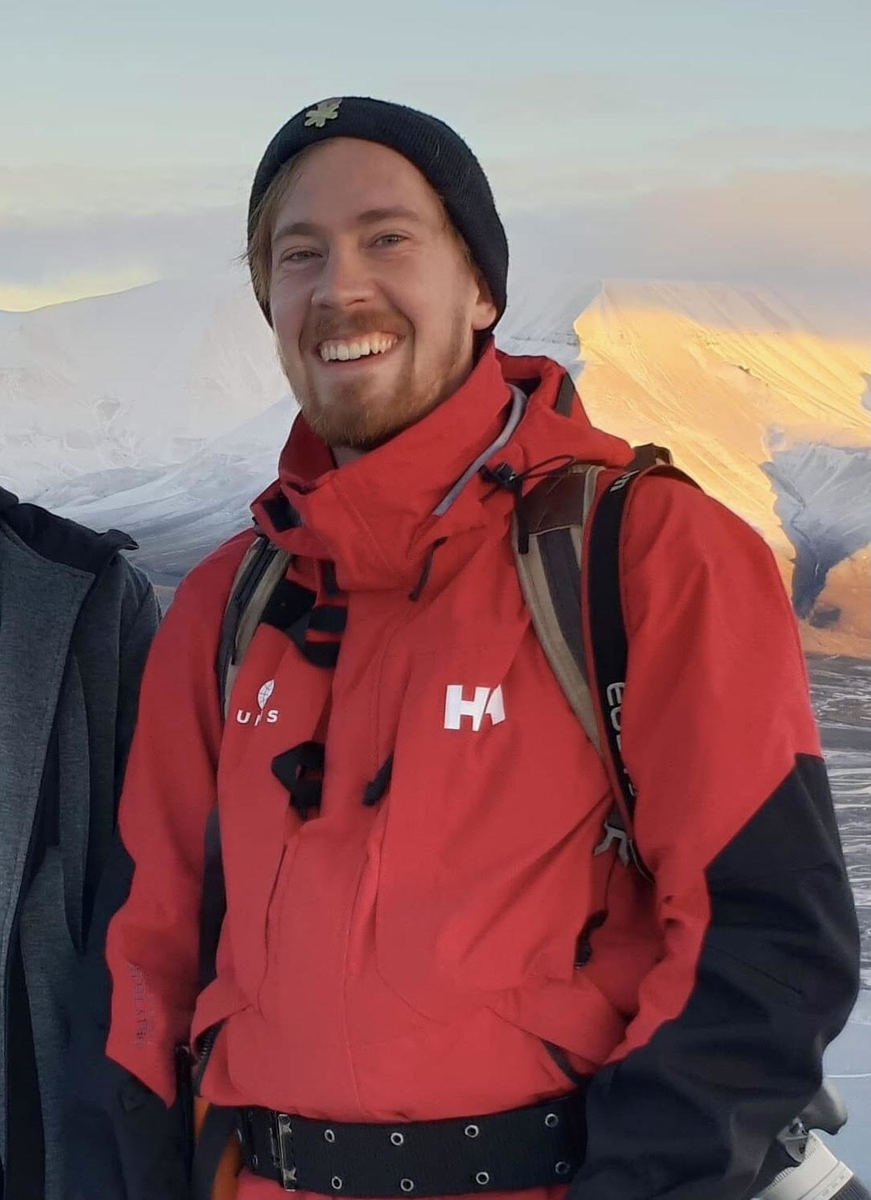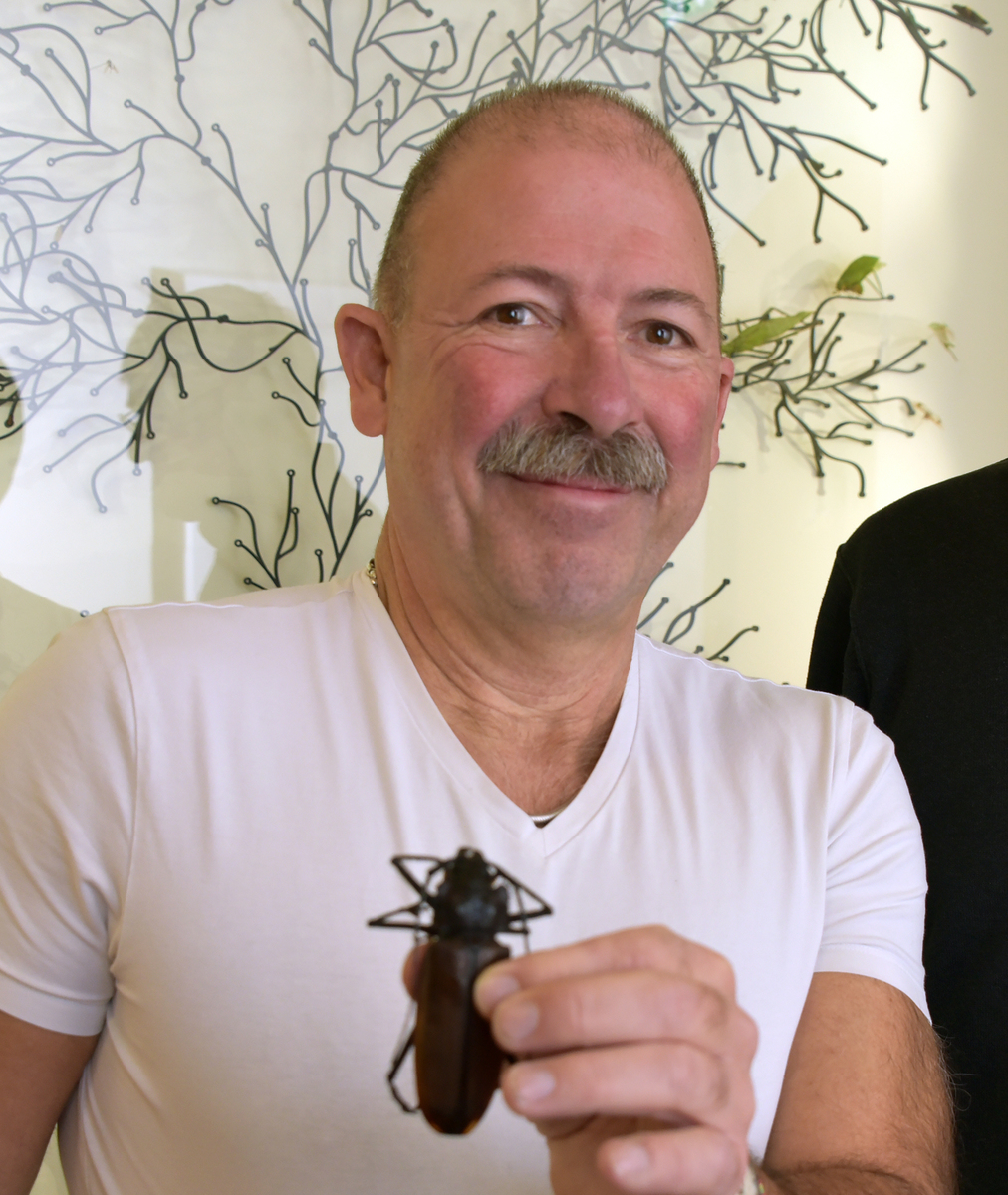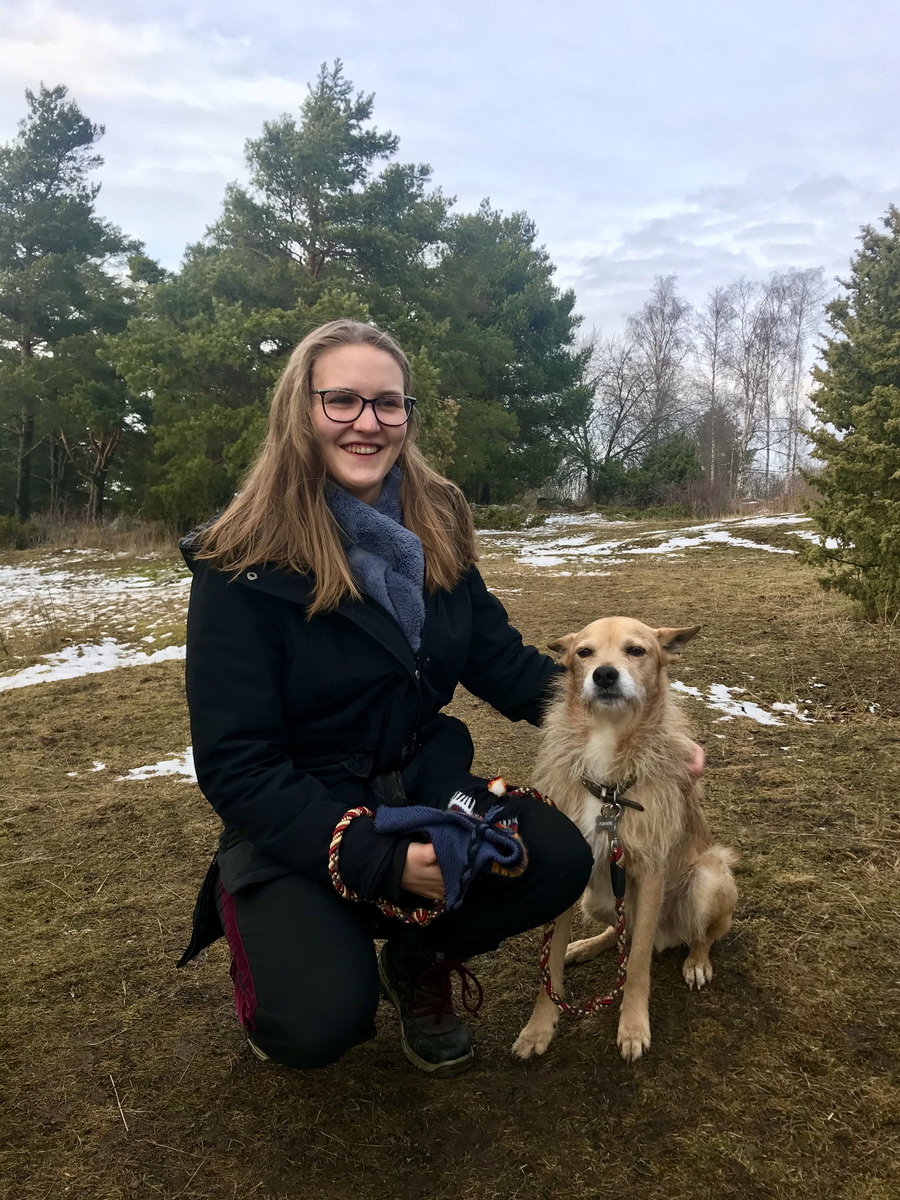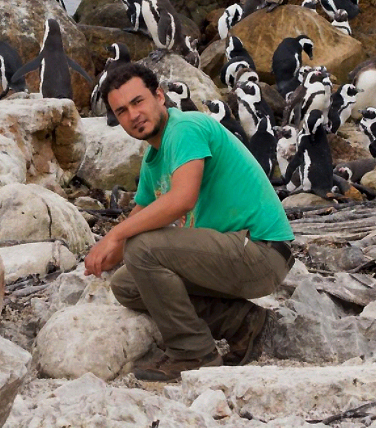Complete beetles found in the fossil faeces of a 230 million-year-old dinosaur ancestor
2021-07-01
The tiny beetle Triamyxa coprolithica is the first-ever insect to be described from fossil faeces. A few near-complete specimens and numerous isolated body parts allowed vertebrate palaeontologists and entomologists to puzzle together a complete reconstruction of the Triassic beetle, and to understand its relation to modern ones. All thanks to a hungry animal, probably the dinosaur ancestor Silesaurus opolensis, that 230 million years ago helped collecting and preserving the beetles by ingesting them in large number.
In a recently published study in Current Biology, entomologists from Taiwan, Germany and Mexico and Swedish vertebrate palaeontologists used synchrotron microtomography, a method similar to CT scans used in hospitals but adapted for much smaller objects, to 3D-reconstruct the beetles trapped within the fossilized faeces, so-called coprolite. Of the many specimens ingested by the reptile, a few specimens were nearly complete, with much of the delicate legs and antennae still intact. Thanks to their good preservation, the researchers were able to reconstruct the tiny beetle in great detail and compare it to those living today. The beetle was called Triamyxa, referring to its Triassic age and the beetle group called Myxophaga where it belongs to. It represents a previously unknown family of beetles which got extinct and did not survive until today. Only Triamyxa’s distant relatives did survive until today: they are tiny and live in wet places with abundant algae.
“Sounds unbelievable, but thanks to modern scanning methods we were able to reconstruct easily how this 1.5 mm long ancient beetle looked like! It was like working with a digital 3D model of a beetle collected just today!” says Assistant Professor Martin Fikáček, an entomologist from the Department of Biological Sciences, National Sun Yat-sen University. “Let’s check more fossil faeces! I hope we will find many more beetles and better understand how did they become the most diverse group of organisms in the Earth”, he adds.
“We were absolutely amazed by the abundance and fantastic preservation of the beetles in the coprolite fragment”, says Martin Qvarnström of Uppsala University, the leading author of the paper.
The preservation of the beetles in the coprolite is similar to specimens from amber, which normally yield the best-preserved insect fossils. Amber, however, was mainly formed during relatively recent geological time. The discovery of Triamyxa shows that coprolites may be valuable for studying early insect evolution and, at the same time, the diet of extinct vertebrates.
Silesaurus opolensis – the probable producer of the coprolite – was a relatively small dinosaur ancestor with estimated body weight of 15 kilograms that lived in Poland approximately 230 million years ago. Silesaurus possessed a beak at the tip of its jaws that could have been used to root in the litter and perhaps peck insects off the ground, somewhat in similar to recent birds. But although Silesaurus ingested numerous individuals of Triamyxa, the beetle was likely too small to have been the only targeted prey. Instead, Triamyxa was likely sharing the habitat with larger beetles, which are represented by disarticulated remains in the coprolites, and other prey, which never ended up in the coprolites in a recognizable shape.
“I never thought that we would be able to find out what the Triassic precursor of the dinosaurs ate for dinner” adds Grzegorz Niedźwiedzki of Uppsala University, another member of the team.
Read more:
https://www.cell.com/current-biology/fulltext/S0960-9822(21)00674-6
